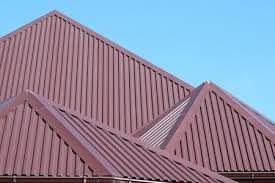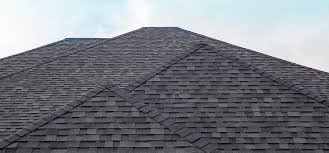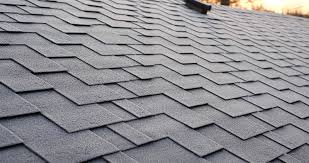Roofing Material Options: What’s New in Residential Roofing Materials
Your home’s roof isn’t just functional, it also adds style. From shingles and tiles to solar panels and green materials, how do you know what’s best for your home? Here’s a look at what’s new in residential roofing materials and some trends to watch in the coming years.
Cool or White Roofing
In response to climate change, many are looking to cool roofing as an option, which is a reflective coating that permits the roof to reflect the warmth of the sun instead of retaining it. Consider a cool roof or a white roof which can reduce your home’s energy use if you live in a warm climate.
Green Roofing
Green roofs are slowly catching on in America. Green roofs require water proofing and proper drainage, so gutters are a must. While a green roof has an almost limitless lifespan, there are several factors that will determine how much upkeep is needed when it comes to green roofs, so do your research before committing.

Asphalt Shingles
The vast majority of homes have asphalt shingles – they’re pretty standard across the country. They’re a great choice when you want something affordable that provides long-lasting protection, and they come in a huge range of styles and colors so you can completely customize your home’s look. Asphalt shingles are available in 3-tab and architectural styles. Standard 3-tab shingles, which have fallen out of fashion, provide a flat and uniform look – but architectural asphalt shingles provide depth and dimension and create a modern, stylish look. You can often choose between organic shingles and fiberglass shingles. For most people, it makes sense to talk to a residential roofing contractor about what’s best.
Lifespan: Most asphalt shingle roofs last between 20 and 30 years.
Wood Shakes and Shingles
Wood shakes and shingles are an all-natural alternative for standard residential roofing. Shakes are pieces of wood that feature a thicker butt end than point, and shingles are uniformly cut and have even tapers. You can choose from several types of wood for shakes or shingles, including Western red cedar, cypress, spruce and pine. Natural wood roofs can be incredibly beautiful, but there are several factors that affect how long a wood roof will last – including whether it’s been treated with chemicals, the quality of the installation, and how well you maintain it. They’re durable, but in high-moisture environments, they’re susceptible to mold, mildew and rot. Lifespan: A natural wood roof can last between 25 and 30 years with the proper care.

Faux Slate Roofing Shingles
This composite material looks like the real thing, even close up, but costs a lot less. And it weighs about the same as asphalt, so there’s no need to beef up the roof structure, as you would have to do with slate. Made of a variety of compositions, including plastic/polymer, clay, rubber or asphalt, fake slate is more slippery than real slate—if you live in a snowy climate, consider installing snow guards to prevent sheets of ice from sliding down and hurting someone. Some faux slate may fade or crack under impact. Because it’s a manufactured product, with a nailing strip, most roofing contractors can install it (only a skilled mason can install real slate). The warranties on faux slate roofing are generally comparable to asphalt shingles—expect them to last anywhere from 20–50 years.
Metal Roofing
Metal roofing comes in steel, aluminum, copper, and alloy strips, and in various shapes and textures. Copper is especially expensive. Over time, copper acquires a greenish patina that some people find attractive. Metal roofing can be slick, just like slate, so consider snow guards in cold climates, to prevent sheets of ice from sliding off and hurting someone. A metal roof can be noisy during a rainstorm as drops of water ping against it. In the past, we’ve tested steel roofing and found that it can dent fairly easily, but options with a textured surface tend to mask small dents and dings quite well. Metal roofing effectively reflects the sun’s rays, so it keeps your home cooler in summer—a benefit in hot climates. Make sure you hire a contractor who is familiar with the material as it’s a very different job from putting on asphalt shingles. A metal roof can last anywhere from 50–100 years.

Solar tiles
Advanced solar collectors integrate seamlessly into existing shingles, generating up to 1 kilowatt of energy per 100 square feet. They’re particularly good for sunny roofs in homeowners’ associations that forbid typical solar panels. While they may help offset energy costs with solar power, they also cost more than traditional solar options.
Slate
Slate roofing lasts more than 100 years. It won’t burn, is waterproof and resists mold and fungus. Slate is effective in wet climates but is expensive, heavy and may be easily broken when stepped on. Keep this in mind if you live in an area that experiences hail.
Rubber slate
Rubber slate looks natural and can be cut with a knife to fit intricate roofs like those found on Victorian homes. Rubber slate roofs can last 100 years but can be damaged by satellite dishes and walking – so may also be susceptible to damage by hail, similar to slate. Roofing professionals that are trained to install rubber slate may be hard to find.
BUILT-UP ROOFING MEMBRANE
Built-up roofing, or “BUR” as it’s commonly known, is essentially your standard tar-and-gravel roof. It’s built with multiple layers (piles). This is a flexible roof type as the number of layers can be varied to help control costs or meet certain durability requirements you may need to address. It’s a very old low-slope roof system, and is one of the most cost-effective and tough roofing types available today.
MODIFIED BITUMEN ROOFING
Reinforced roof fabrics are applied to act as “carriers” for bitumen, which is later cut and installed in layers similar to BUR membranes. These roofing systems are generally fastened to commercial rooftops as two-ply systems, adhered to the roofing deck for maximum stability and protection. Maintenance of modified bitumen roofs are simple and can typically be handled with annual inspections and cleaning. They offer enhanced tensile strength compared to most other flat roof types that experience regular foot traffic, and that means if you anticipate a lot of activity on your commercial building roof, modified bitumen may be ideal.
THERMOSET ROOF MEMBRANE
Also known as EPDM roofing, Thermoset roof system offer long-lasting durability and versatility, paired with a simple installation and ease of maintenance/repair when compared to most other commercial roof types. EPDM boasts a strong resistance to ultraviolet light and ozone, and is constructed from a single-ply rubber material. Other benefits include great flexibility in colder temperatures; resistance to some acids, solvents, and alcohol; and reflective properties that help lower cooling costs.
THERMOPLASTIC ROOF MEMBRANE
Thermoplastic Polyolefin (TPO) and Poly Vinyl Chloride (PVC) roofing systems are lightweight, highly reflective, and provide excellent weathering and resistance to UV light, punctures/tears, and most chemicals, including oils, animal fats, and bacterial growth. The seam strength offered by thermoplastic roofs make it ideal for second-generation applications, too. The nature of these resistances makes thermoplastic roof membrane popular for restaurants and other businesses that emit oils and/or fats from their ventilation systems. Other benefits range from a high-temperature tolerance to high resistance to fire and high winds.
The best type of roof for you really depends on your climate, budget and house. To see what’s best in your area, talk with licensed roofing contractors and look at some of the newer developments nearby to get ideas on what type of roofing material to use.